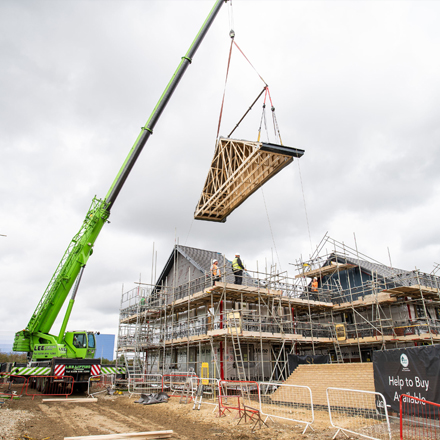The triple impact of the net zero agenda, skills shortages, and the rising costs of materials has led to growing calls for the industry to embrace modern methods of construction (MMC).

Moving to non-traditional methods, such as off-site and modular building techniques, offers a world of new possibilities – from faster build programmes and improved build quality to new jobs and zero carbon technology – all whilst reducing costs.
At a time when the sector is under extreme resource strain, these are the very things we need to tackle the chronic shortage of affordable housing.
Digital working and offsite construction are a catalyst for levelling up, improving neighbourhoods, and moving jobs away from the places where homes are built.
MMC also present a unique opportunity for the sector to diversify the workforce and attract new talent. The construction sector remains a male-dominated industry, but MMC need workers from varied disciplines to join the call to arms. Whether that be as a product designer working in a factory or an engineer based at an office – the new roles lend themselves to a range of backgrounds and skill sets.
Whilst the case for change has been gaining momentum, industry adoption of these strategies has been piecemeal. Against a backdrop of economic turmoil, MMC is yet to break through as a mainstream alternative to paper-based design and masonry methods.
Issues such as a lack of cross-sector support, skills shortages, and regulatory barriers are hindering its growth and slowing down the take-up.
How can the sector embrace change and transform the future of housebuilding?
First and foremost, governmental support will drive increased confidence and certainty in the approach: both financially through grants and subsidies for developers and through planning policy incentives.
Setting regulatory standards around performance will motivate the industry to innovate, much like the car industry did when they were given emission targets, shifting their focus towards new technology and ways of working.
More strategic investment in training the workforce is required too. We need to upskill existing staff to cover site management, integration, and assembly, and hire new staff to lead on design and technology.
With skills shortages prevalent across other sectors, from care and hospitality to the NHS, it is not enough to depend on the government to implement change. The industry needs to collaborate end to end, from encouraging children to consider construction as a career, to ensuring the delivery of qualifications needed for MMC.
New pockets of cross-sector collaboration are paving the way for a sea change in how we construct homes. Working with other housebuilders we have pioneered MMC techniques, such as offsite timber frame construction through The Advanced Industrialised Methods for the Construction of Homes project (AIMCH). We are progressively adopting these techniques, with 20% utilisation expected by 2026.
Funded by Innovate UK, AIMCH was a three-year research and development project that brought partners from the private rented and social housing sectors together with industry-leading manufacturers and researchers. Participants came from different sectors and industries and included Barratt Developments Plc, Construction Scotland Innovation Centre, Forster Group, L&Q, Manufacturing Technology Centre (MTC), and Stewart Milne Group.
Advanced panelised systems were trialled on live housing developments and now that the project has ended, successful methods will be commercialised and brought to market in volume.
AIMCH has helped with the development of housing blueprints for L&Q which will further improve the efficiency in our delivery of homes.
Outcomes like this reinforce the progress that can be made when we work together, with each partner bringing relevant skills and complementary knowledge to the partnership.
Public uncertainty is also a hurdle that is still to be overcome. The industry has developed well-practised methods to mitigate risks and brick and block methods are what people know and trust. Some house buyers are nervous when they hear part of their home is being built in a factory, yet, in reality, MMC guarantees better environments for assembling and building than harsh outdoor climates.
The proof is in the pudding, and we need comparative data to back this up. The AIMCH project’s on-site monitoring of MMC systems identified quality improvements and set benchmarks for productivity and waste reduction. Monitoring took place at 42 plots, with over 100,000 operative observations recorded and 500,000 pieces of data collected and used to evaluate masonry, timber frame and advanced closed panel methods. The results showed homes can be built 20 – 40% faster, and labour and waste on site reduced by 15-20%.
As the dust settles on the appointment of the new cabinet, now is the time to get ahead of the legislation and speed up our move towards new ways of building. With sector will and appetite in our favour, let’s work together to establish MMC as the new norm.
